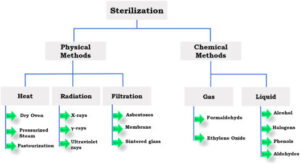- There is no regulatory requirement to perform 30 cycles (or any number of cycles) to qualify parametric release. Other than the requirement to do direct measurements of ethylene oxide (EO) concentration and relative humidity (RH) using calibrated measurement devices when performing parametric release, there is no difference to what is required to qualify an EO sterilization process when using a biological indicator (BI) release, or when using parametric release.
- I would suggest to you that there is actually an increased confidence of sterility when using parametric release. When using BIs, the EO concentration and RH are typically indirectly estimated by calculations often, for example, using inject pressure differentials. The assumption here is that the prescribed pressure rise during EO and RH injections is due to all EO, or all steam, respectively, entering the chamber. However, if, for example, part of the total pressure rise during EO injection was due to a minor door leak, a leaky steam valve, or some other source of a gas entering the chamber other than EO, it could appear that the prescribed pressure rise is all from EO, but in reality it may be due other factors. If the BIs from such a run all come out all negative, one might assume that the required sterility assurance level (SAL) of 10-6 has been achieved, when in reality, the resultant SAL may be less (e.g. 10-4). If in this same scenario one was using parametric release, one would know that the pressure rise which appeared to be due to EO entering the chamber was insufficient as they would have an actual direct measurement of the amount of EO that was added. (This same scenario would apply to RH.)
- The bottom line here is that a) other than the extra equipment required when using parametric release, there is no difference in what is required to perform a qualification using a BI release, or using parametric release, and b) parametric release actually gives one a more definitive result of proper sterilization than it does when using the BI release methodology.



